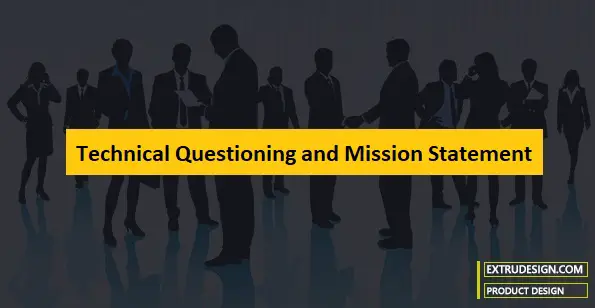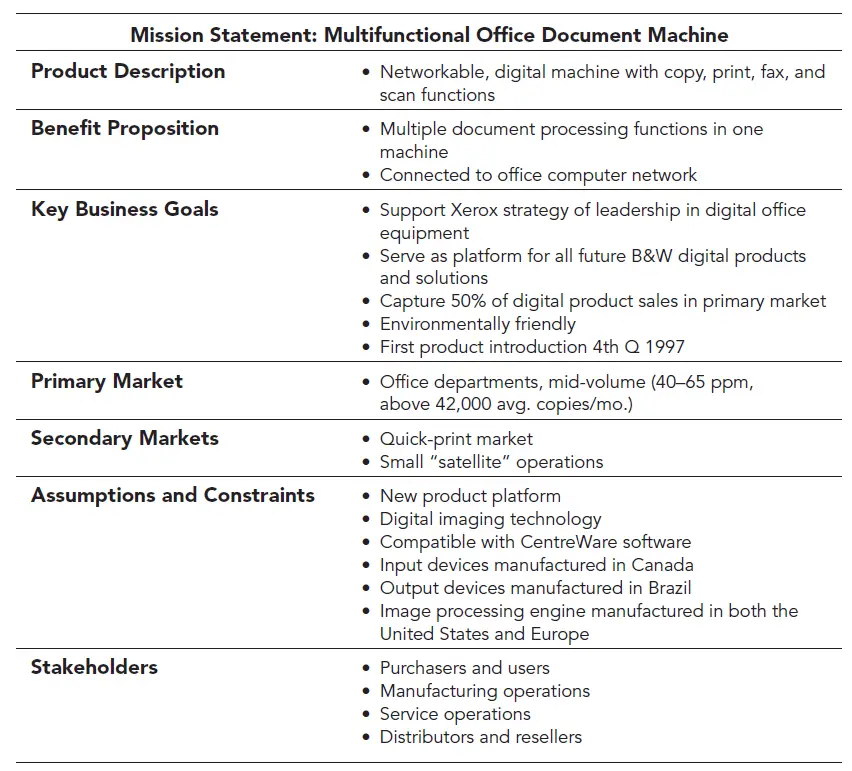In the course of Product Development, the Technical questioning and the Mission statement are the two basic methods of weighing the two risks of the new product development.
Those risks are
- Technical risk – can we make it?
- Market risk – will they buy it?

The two simple tools to understand and clarify these risks are the Technical questioning and the mission statement.
The company has to understand three possible environments prevailing in the market and plan the introduction of new product accordingly:
- Environment when they are introducing new technology
- Environment when technology is rapidly evolving
- Environment when technology is topping out
Objectives of Mission statement and technical questioning
- Define goals (goals must be stated before they can be met)
- Focus design efforts
- Translate the business case analysis to the development team
- Provide a schedule for tasks (timeline and milestones)
- Provide guidelines for the design process that will prevent conflict within the design team
Technical Questioning
- The First step in task clarification is usually to gather additional information.
- One can explore many developments and gather information on many topics. Focus is always needed.
- To keep focused, one should first question the current understanding of the development.
- The Technical Questioning questions we mentioned need to be asked and answered, not once, but continually through the lifecycle of the design process.
Technical Questioning Questions
- What is the problem really about?
- What implicit expectations and desires are involved?
- Are the stated customer needs, functional requirements, and constraints truly appropriate?
- What avenues are open for creative design?
- What characteristics the product must have or not have?
- What aspects of the design task can and should be quantified now?
- Do any biases exist with the chosen task statement or terminology?
- What are the technical and technological conflicts inherent in the design task?
These questions force the design team to think critically. Restate the design task in a more precise way. Immediately answering the questions is not the focus; instead, answers will typically require development exploration.
Mission Statement
The tangible result of the technical questioning procedure is the design team’s mission statement or market attack plan.
- Who should write it? : Typically project manager or the Design Lead
- When it should be available and whom it should reach? During the project kick-off and should reach all team members
Thus an exciting vision of the new product is conveyed to the entire team, to communicate project goals. The mission statement also helps when interviewing customers, meeting with potential suppliers.
The mission statement may include some or all of the following information:
- Brief (one-sentence) description of the product: This description identifies the basic function of the product but avoids implying a specific product concept. It may, in fact, be the product vision statement.
- Benefit proposition: This element of the mission statement articulates the critical few reasons a customer would buy the product. To some extent, this is a hypothesis, which will be validated during the concept development process.
- Key business goals: In addition to the project goals that support the corporate strategy, these goals generally include goals for time, cost, and quality (e.g., timing of the product introduction, desired financial performance, market share targets).
- Target market(s) for the product: There may be several target markets for the product. This part of the mission statement identifies the primary market as well as any secondary markets that should be considered in the development effort.
- Assumptions and constraints that guide the development effort: Assumptions must be made carefully; although they restrict the range of possible product concepts, they help to maintain manageable project scope. Information may be attached to the mission statement to document decisions about assumptions and constraints.
- Stakeholders: One way to ensure that many of the subtle development issues are addressed is to explicitly list all of the product’s stakeholders, that is, all of the groups of people who are affected by the product’s success or failure. The stakeholder list begins with the end-user (the ultimate external customer) and the external customer who makes the buying decision about the product. Stakeholders also include the customers of the product who reside within the firm, such as the sales force, the service organization, and the production departments. The list of stakeholders serves as a reminder for the team to consider the needs of everyone who will be influenced by the product.
Mission Statement Example

This is all about the Technical Questioning and Mission Statement in Product Development processes.
Conclusion
We have discussed the technical questioning, questions that can be asked during the customer interviews, and mission statements with the result of technical questioning in product development with an example. Let us know if you have further thoughts on this topic.


Leave a Reply